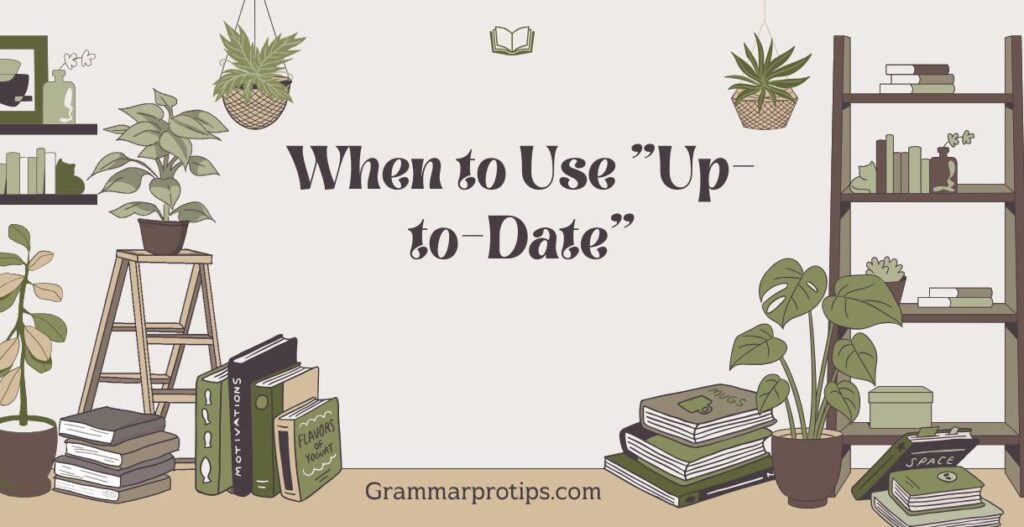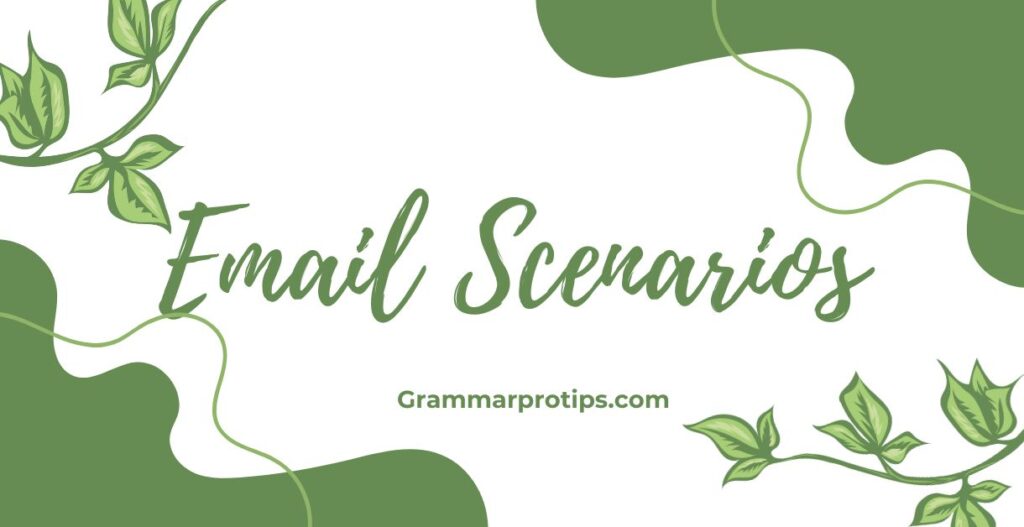When it comes to using “up to date” versus “up-to-date,” many writers are often unsure of which form is correct. This confusion arises because the rules for hyphenation in English are subtle, and the distinction between the two forms isn’t always immediately clear. Whether you’re sending a professional email, writing an article, or crafting informal communication, choosing the right form of this phrase is essential for maintaining clarity and correctness.
In this article, we’ll explore the difference between up to date and up-to-date, providing clear guidelines, usage examples, and practical scenarios to help you avoid common mistakes. Let’s dive into the details of this grammar distinction.
Understanding the Difference: Up to Date vs Up-to-Date
Before diving into the rules, let’s define the terms:
- Up to date (without hyphens) is an adverbial phrase, meaning it describes how something is current or modernized.
- Up-to-date (with hyphens) is a compound adjective, meaning it modifies a noun by describing it as modern, current, or up-to-date.
When to Use “Up to Date” (No Hyphens)
The phrase up to date is typically used when you want to indicate adverbial usage, describing how something is current or updated. In this form, it acts as an adverbial phrase and doesn’t require hyphens.
Example:
- “I keep my calendar up to date.”
In this case, “up to date” is describing the action of keeping the calendar current or updated.
Another scenario:
- “Please let me know if your up to date software is working correctly.”
When to Use “Up-to-Date” (With Hyphens)

When you use up-to-date with hyphens, it becomes a compound adjective, meaning it is used to modify a noun. It helps clarify that the noun is modernized, updated, or in a state-of-the-art condition.
Example:
- “I rely on up-to-date information when making decisions.” Here, “up-to-date” describes the information, meaning it is current or updated.
Another example:
- “The office uses up-to-date software to streamline processes.”
Hyphenation: The Key to Understanding When to Use Which Form
To sum it up: when you’re describing a noun with current or modernized characteristics, you’ll use up-to-date (with hyphens). When you’re simply saying something is current or updated, without modifying a noun directly, you’ll use up to date (without hyphens).
Key Rule:
- Up to date (no hyphens) = adverbial phrase (describing an action).
- Up-to-date (with hyphens) = compound adjective (modifying a noun).
Common Usage Mistakes
Even though the rules are straightforward, there are some common mistakes that people make when deciding between up to date and up-to-date. Let’s clear up some of these errors.
Example 1: Professional Writing in Emails
Incorrect:
“I need to make sure this document is up to date before I send it.”
Correct:
“I need to make sure this document is up-to-date before I send it.”
In this case, “up-to-date” modifies the noun “document,” which means the document should be current and updated.
Example 2: Informal Communication
Incorrect:
“My software is up to date now.”
Correct:
“My software is up-to-date now.”
Here, “up-to-date” is an adjective modifying “software.”
Adverbial Phrase vs. Adjective Phrase
A crucial distinction in English grammar revolves around whether you’re dealing with an adverbial phrase or an adjective phrase. This distinction determines whether hyphenation is required.
Adverbial Phrase (No Hyphens)
When up to date is used as an adverb, it modifies a verb, indicating that an action has been completed to keep something current or updated.
Example:
- “I will stay up to date with the latest industry trends.” Here, “stay up to date” describes the action of keeping current.
Adjective Phrase (Hyphens Needed)
When up-to-date is used as an adjective, it modifies a noun. The hyphen connects the words to make it clear that they act together as one concept.
Example:
- “We need up-to-date information to make the decision.” In this case, “up-to-date” is modifying “information.”
A Table to Clarify Usage
| Usage | Example | Correct Form |
|---|---|---|
| Adverbial Phrase | “I keep my software up to date.” | Up to date (no hyphens) |
| Compound Adjective | “The team uses up-to-date software for the project.” | Up-to-date (with hyphens) |
| Adverbial Phrase | “I try to stay up to date with the latest tech trends.” | Up to date (no hyphens) |
| Compound Adjective | “Our database is up-to-date and optimized for performance.” | Up-to-date (with hyphens) |
The Importance of Writing Clarity and Grammar Rules
Knowing when to use up to date versus up-to-date can significantly improve the clarity of your writing, whether you’re drafting a professional email or working on informal communication. Adhering to the correct hyphenation helps you communicate more effectively and ensures that your writing meets modern guidelines for clear expression.
Remember that hyphen rules exist to aid in writing clarity. When in doubt, think about whether the phrase is modifying a noun (hyphen needed) or describing an action (no hyphen needed).
Email Scenarios

Let’s look at two email scenarios to demonstrate the different uses of up to date and up-to-date.
Scenario 1: Professional Email Example
Subject: Keeping Your Software Up-to-Date
Email Body:
Dear John,
I hope this message finds you well.
As part of our ongoing efforts to ensure that your system remains up-to-date, I recommend reviewing the latest software updates available. This will ensure that you benefit from the cutting-edge features and security improvements we have implemented.
If you need assistance with the update, please don’t hesitate to reach out.
Best regards,
Jane Doe
In this example, “up-to-date” is used correctly to describe the software as being current or modernized.
Scenario 2: Informal Communication Example
Subject: Stay Up to Date on Your Calendar
Email Body:
Hi Sarah,
Just a quick reminder to keep your calendar up to date so we don’t miss any meetings this week. It’s important to stay current with the schedule, especially with some last-minute changes we’ve had.
Let me know if you need anything else!
Best,
Mark
Here, “up to date” is used correctly as an adverbial phrase, describing the action of keeping the calendar updated.
Synonyms for Up to Date
If you ever feel like mixing things up, here are some useful synonyms for up to date that you can use depending on the context:
- Modernized
- Current
- Updated
- State-of-the-art
- Cutting-edge
- Timely
- Contemporary
- Recent
Each of these can be used to describe something that is modern, up-to-date, or up to date, depending on the scenario.
Is Up to Date Hyphenated?
You might wonder: “Is up to date hyphenated?” The answer depends on the context in which it is used:
- No hyphen when used as an adverbial phrase: “I want to keep my project up to date.”
- Hyphenated when used as a compound adjective: “The software is up-to-date.”
Conclusion: The Final Word on Up to Date vs Up-to-Date
The choice between up to date and up-to-date ultimately comes down to how you’re using the phrase in your sentence. If you’re describing an action, go with up to date. If you’re describing a noun, use up-to-date.
By understanding when to use hyphens, and keeping grammar rules in mind, you’ll improve your writing clarity and ensure your communication is professional and effective. Whether you’re sending a formal email or engaging in informal communication, paying attention to these small details will set your writing apart.
Remember: Up-to-date means current and modern, while up to date describes the action of maintaining this state. So, next time you’re wondering about **up to

“Smith is the dedicated admin of [grammarprotips.com], a platform focused on enhancing grammar skills. With a passion for language and education, Smith strives to make grammar accessible and enjoyable for learners of all levels. Committed to delivering high-quality content, Smith continually explores innovative ways to help users master the complexities of grammar.”


payday loan